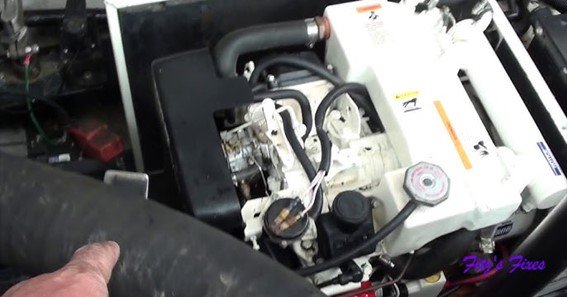A Kohler 20kW generator is a reliable power solution, but like any mechanical system, it can face problems, including coolant circulation issues. If the radiator in your Kohler 20kW generator is not circulating coolant properly, the engine can overheat, leading to potential shutdowns or permanent damage. Here’s a comprehensive guide to identifying and addressing coolant circulation problems in your Kohler generator.
Common Causes Of Coolant Circulation Problems
- Low Coolant Level
One of the first things to check if you notice circulation issues is the coolant level. A low coolant level can prevent the system from properly regulating the engine’s temperature, causing overheating. Ensure that the coolant reservoir is filled to the recommended level, using the appropriate coolant mixture for your generator. - Faulty Water Pump
The water pump is responsible for circulating coolant throughout the generator’s system. If the water pump is not functioning correctly, it can lead to stagnant coolant, which increases the risk of overheating. Inspect the water pump’s impeller for any damage or blockages that could prevent it from moving coolant effectively. - Thermostat Malfunction
The thermostat regulates the flow of coolant through the radiator based on the engine’s temperature. Coolant won’t circulate properly if the thermostat is stuck closed, leading to high temperatures. Replacing a faulty thermostat can often resolve this issue. - Air Blockages in the Cooling System
Air pockets in the coolant lines can obstruct the flow of coolant. Bleeding the system to remove trapped air can restore proper circulation. This is especially crucial if you recently topped up the coolant, as adding coolant can sometimes introduce air into the system. - Clogged Radiator or Coolant Lines
A clogged radiator or blocked coolant lines can impede coolant flow, causing overheating. Debris, rust, or old coolant deposits can accumulate in the radiator over time. Flushing the cooling system can help remove these obstructions and improve circulation.
How To Address Coolant Circulation Issues
- Check Coolant Levels: Start by inspecting the coolant reservoir and topping it up if necessary. Always use the manufacturer-recommended coolant type to ensure optimal performance.
- Inspect and Replace the Water Pump: If the coolant isn’t circulating, remove the water pump and check the impeller for damage. Replace the pump if needed to restore proper circulation.
- Test the Thermostat: Remove the thermostat and test it by placing it in boiling water. If it fails to open at the specified temperature, replace it with a new one.
- Bleed the Cooling System: If air is trapped in the coolant lines, locate the bleed valve (if available) or consult the manual for proper bleeding procedures to eliminate air pockets.
- Flush the Radiator: Use a radiator flush solution to clean out any debris or buildup. Refill with fresh coolant and monitor the system for any signs of blockage or leaks.
FAQ
1. What causes a Kohler 20kW generator to overheat?
Overheating can occur due to low coolant levels, a faulty water pump, thermostat issues, or blockages in the cooling system. Regular maintenance helps prevent these problems.
2. How often should I check the coolant in my Kohler generator?
It’s recommended to check the coolant level before each use and during routine maintenance, at least every 6 months.
3. Can I fix a non-circulating coolant issue myself?
Yes, basic fixes like topping up coolant, bleeding air, or replacing a thermostat can be done DIY. However, complex repairs like replacing the water pump might require a technician.
4. How do I know if the radiator is clogged?
Signs of a clogged radiator include overheating, coolant leaks, and reduced coolant levels without visible leaks. A flush can often resolve mild clogs.
5. Should I use a specific type of coolant for my Kohler generator?
Yes, always use the manufacturer-recommended coolant type for your generator model. Using the wrong type can cause corrosion or clogging.










